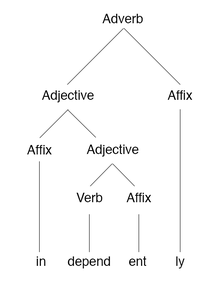It’s Thursday and that means more of the History of the English Language! Today, we deal with Middle English syntax!
So, remember how we talked about Old English syntax in our last post? Well, a lot happens in the shift from Old English to Middle English.
As you know by now, English morphology changed quite a bit in this “shift” too. Particularly important for Middle English syntax was the weakening inflections on words. In Old English, the function of nouns, for example, was rather clear. If it was a nominative, it was the subject – accusative the object and so on. But, with the loss of these endings, a lot suddenly became rather ambiguous.
Suddenly, word order became quite important!
First, while Old English tended toward using V2 word order in main clauses and VF in sub-clauses, Middle English tends to be very similar to Present-Day English word order.
However, Modern English word order is quite.. rigid. It has to be, really, because the word order is what tells you about the subject and the object in a sentence. There is a world of difference between Jack ate the fish and The fish ate Jack, isn’t there?
But Middle English is a bit.. more flexible.
Typically, the verb is found in second position, preceded by the subject and followed by the object (that is, a typical SVO order). We find the same in Present-Day English (such as in John likes football).
Although the standard word order of Middle English is therefore rather similar to what we find in English today, we do see a few differences.
The V2 constraint (that we saw in Old English) continues to be quite common during the Middle English period. It had a sharp decline in use by 1600 and is today virtually extinct in English.
SOV was also still in use during Middle English, but it now became rather unusual. In the late Middle English period, it appears to have become very rare (though still occasionally occurring).
Except for these two, we also find that Middle English makes use of VSO order in questions and commands:
Gyf ye the chyld any thyng?
Give you the child any thing?
Bring ye the horse
Bring you the horse1
OSV and OVS are still found when emphasising the object:
This boke I haue mad and wretyn
This book I have made and written
Clothis have they none
Clothes have they none2
So there are still a few differences.
The changes in word order actually had a significant effect on the development of the English language. For example, an expressed subject became increasingly obligatory in Middle English and the so-called dummy it came to be used more and more (that is, It seems to me…). But subject-less constructions still occurred quite frequently (which is something to keep in mind when reading Middle English).
Generally, though, we are moving increasingly toward Present-Day English. As a result, it is my personal belief that most speakers of English today can likely read Middle English with some focused attention (syntactically speaking anyway – I won’t make promises about orthography).
Want to see if you can?
Check out this interlinear translation of some of Geoffrey Chaucer’s The Canterbury Tales and test yourself!
(Let me know how it goes, will ya?)
Join me for a look into modern English syntax on February 27!
Until then, enjoy our Fun Etymologies!
.
References
Albert C. Baugh & Thomas Cable. 2002. A history of the English language. London: Routledge.
Carol Percy. n.d. ME Syntax. Find it here.
Elly van Gelderen. 2016. Old, Middle, and Early Modern Morphology and Syntax through texts. Find it here.
Olga Fisher. 1992. Syntax. In Norman Blake (ed.). The Cambridge history of the English language. Volume II: 1066-1476. Cambridge: Cambridge University Press. pp. 207-408.
Olga Fischer. Ans van Kemenade. Willem Koopman. Wim van der Wurff. 2000. The syntax of early English. Cambridge: Cambridge University Press.
Robert Stanton. Middle English Syntax and Vocabulary – a PPT-presentation “Middle English Syntax and Vocabulary”.





